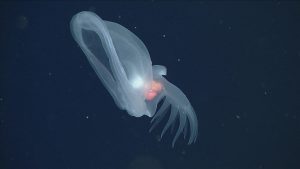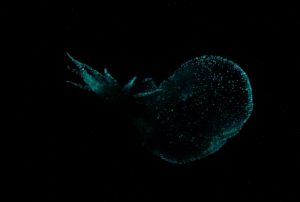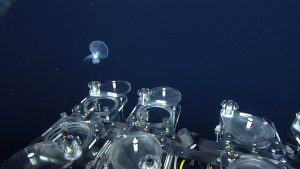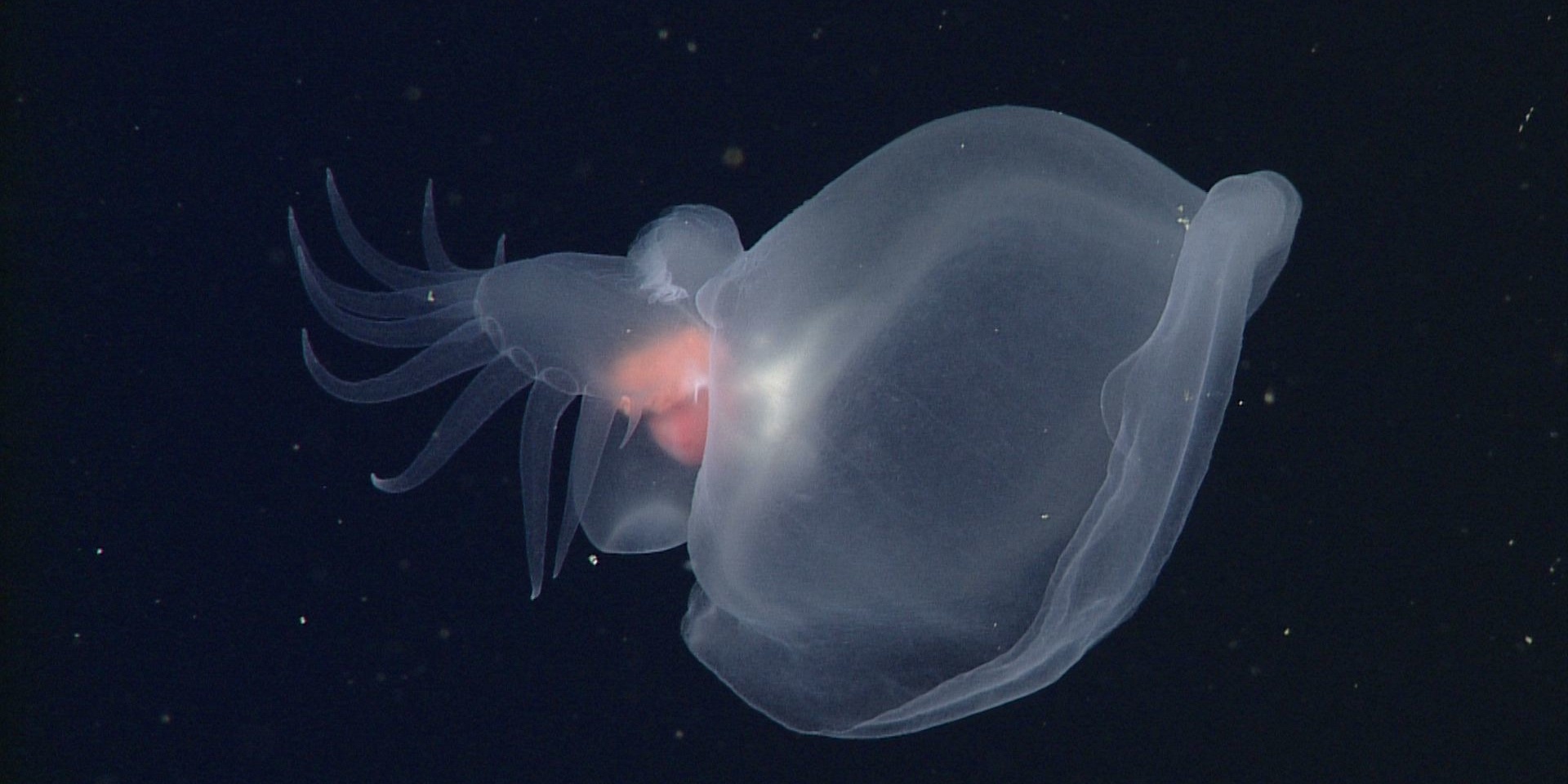We reach more than 65,000 registered users in Dec!! Register Now
MBARI researchers discover remarkable new swimming sea slug in the deep sea
- January 03, 2025
- 6 Views
- 0 Likes
- 0 Comment
MBARI researchers have discovered a remarkable new species of sea slug that lives in the deep sea. Bathydevius caudactylus swims through the ocean’s midnight zone with a large gelatinous hood and paddle-like tail, and lights up with brilliant bioluminescence. The team published a description of the animal, nicknamed the “mystery mollusc,” in the journal Deep-Sea Research Part I.
“Thanks to MBARI’s advanced underwater technology, we were able to prepare the most comprehensive description of a deep-sea animal ever made. We’ve invested more than 20 years in understanding the natural history of this fascinating species of nudibranch. Our discovery is a new piece of the puzzle that can help better understand the largest habitat on Earth,” said MBARI Senior Scientist Bruce Robison, who led efforts to describe the mystery mollusc.
MBARI researchers first observed the mystery mollusc in February 2000 during a dive with the institute’s remotely operated vehicle (ROV) Tiburon offshore of Monterey Bay at 2,614 meters (8,576 feet) deep. The team leveraged MBARI’s advanced and innovative underwater technology to gather extensive natural history information about the mystery mollusc. After reviewing more than 150 sightings from MBARI’s ROVs over the past 20 years, they published a detailed description of this animal.
With a voluminous hooded structure at one end, a flat tail fringed with numerous finger-like projections at the other, and colorful internal organs in between, the team initially struggled to place this animal in a group. Because the animal also had a foot like a snail, they nicknamed this the “mystery mollusc.”
After gently collecting a specimen, MBARI researchers were able to take a closer look at the animal in the lab. Through detailed investigations of anatomy and genetics, they began to solve the mystery, finally confirming that this incredible animal is a nudibranch.
Most nudibranchs, also known as sea slugs, live on the seafloor. Nudibranchs are common in coastal environments—including tide pools, kelp forests, and coral reefs—and a small number of species are known to live on the abyssal seafloor. A few are pelagic and live in open waters near the surface.
The mystery mollusc is currently known to live in the waters offshore of the Pacific coast of North America, with sightings on MBARI expeditions as far north as Oregon and as far south as Southern California. An observation of a similar-looking animal by NOAA researchers in the Mariana Trench in the Western Pacific, suggests the mystery mollusc may have a more widespread distribution.
The mystery mollusc has evolved unique solutions to find food, safety, and companions to survive in the midnight zone.
While most sea slugs use a raspy tongue to feed on prey attached to the seafloor, the mystery mollusc uses a cavernous hood to trap crustaceans like a Venus fly trap plant. A number of other unrelated deep-sea species use this feeding strategy, including some jellies, anemones, and tunicates.
Mystery molluscs are typically seen in open water far below the surface and far above the seafloor. They move through these waters by flexing their body up and down to swim or simply drifting motionless with the currents. To avoid being eaten, the mystery mollusc hides in plain sight with a transparent body. Rapidly closing the oral hood facilitates a quick escape, similar to the pulse of a jelly’s bell. 
Like other nudibranchs, the mystery mollusc is a hermaphrodite, possessing both male and female sex organs. The mystery mollusc appears to descend to the seafloor to spawn. MBARI researchers observed some animals using their muscular foot to attach to the muddy seafloor in order to release their eggs.
Detailed examination of specific gene sequences confirmed that the mystery mollusc is unique enough from other known nudibranchs to merit the creation of a new family, Bathydeviidae. Two shallow-water nudibranchs—the lion’s mane nudibranch (Melibe leonina) and the veiled nudibranch (Tethys fimbria)—use a hood to capture prey; however, this appears to be convergent evolution of a similar feeding method, as the mystery mollusc is only distantly related to these species. In fact, genetics suggests the mystery mollusc may have split off first on its own branch of the nudibranch family tree.
“What is exciting to me about the mystery mollusc is that it exemplifies how much we are learning as we spend more time in the deep sea, particularly below 2,000 meters. For there to be a relatively large, unique, and glowing animal that is in a previously unknown family really underscores the importance of using new technology to catalog this vast environment. The more we learn about deep-sea communities, the better we will be at ocean decision-making and stewardship,” said Haddock.
“Deep-sea animals capture the imagination. These are our neighbors that share our blue planet. Each new discovery is an opportunity to raise awareness about the deep sea and inspire the public to protect the amazing animals and environments found deep beneath the surface,” said Robison.
This work was funded as part of the David and Lucile Packard Foundation’s longtime support of MBARI’s work to advance marine science and technology to understand a changing ocean.
List of Referenes
- Bruce H. Robison, Steven H.D. Haddock. Discovery and description of a remarkable bathypelagic nudibranch, Bathydevius caudactylus, gen. et. sp. nov.. Deep Sea Research Part I: Oceanographic Research Papers, 2024; 214: 104414 DOI: 10.1016/j.dsr.2024.104414
Cite This Article as
No tags found for this post










